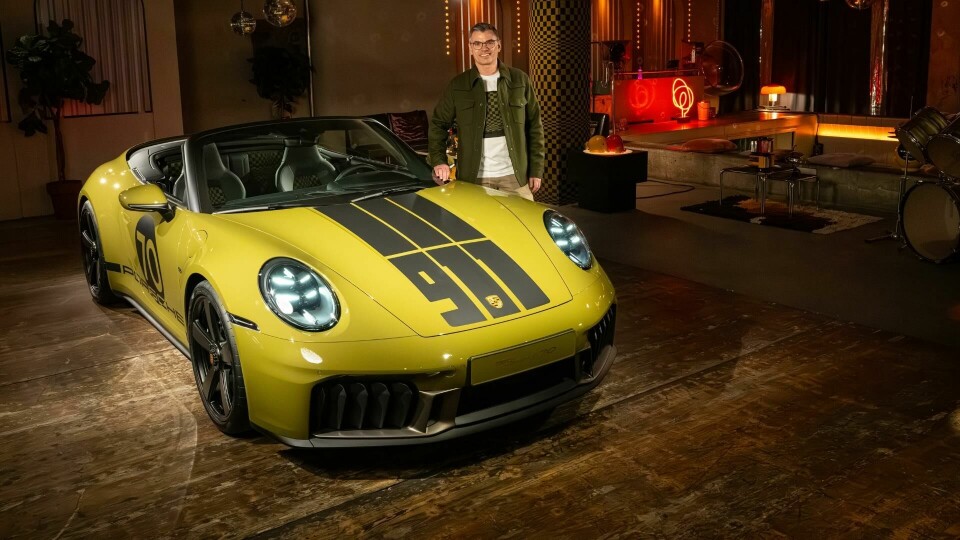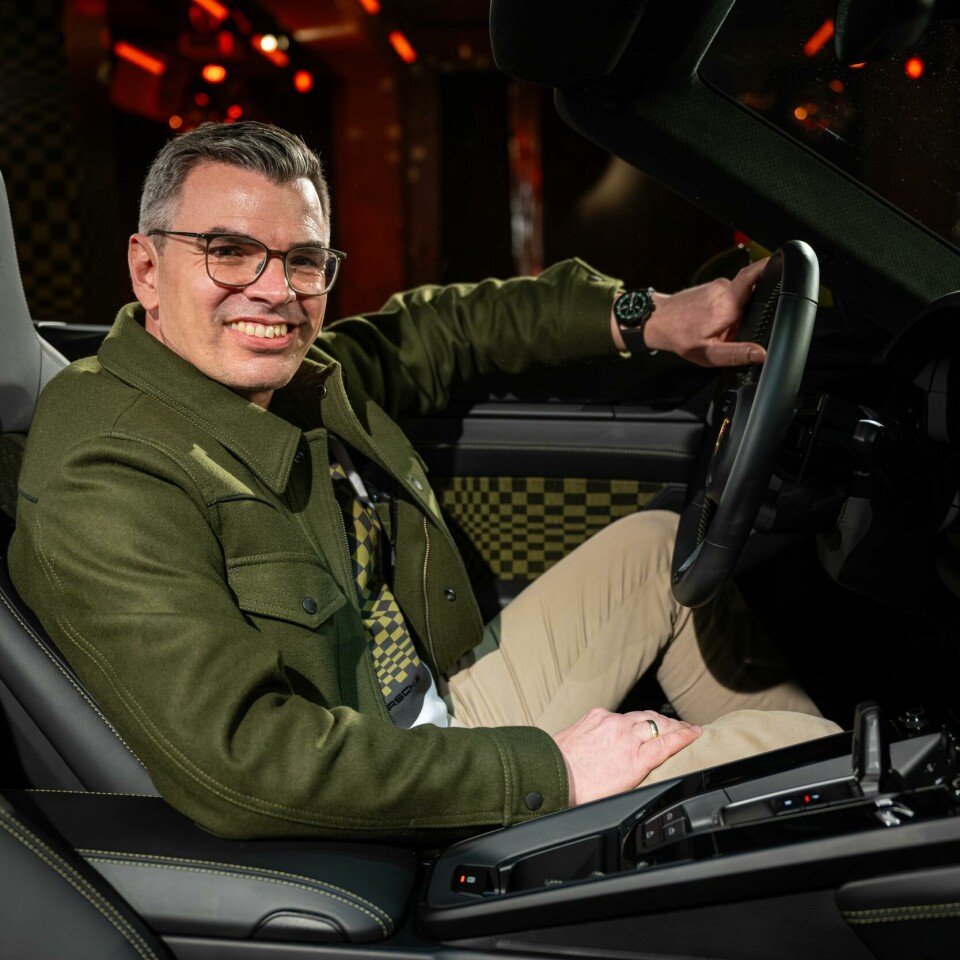
Auto Shanghai 2025: What makes a Porsche Heritage Design edition so special?
We speak to Porsche’s head of Exclusive Manufaktur about the paints, finishes and processes underpinning its new 911 Spirit 70
Porsche has been at it again. Auto Shanghai 2025 brings with it a new special edition 911, the third of a four-part Heritage Design series.
Its predecessors celebrated the fifties and sixties, making the 911 Spirit 70 – working title ‘Psychedelic – a natural next step.
Production is limited to 1,500 cars, all based upon a Carrera GTS Cabriolet making each a 541hp hybrid. This may be a retro tribute, but customers still want modern powertrain technology and an easy-going PDK gearbox.
It launches in Olive Neo, a new colour that pays homage to numerous Porsche greens of the seventies, while the Stuttgart firm’s iconic Pascha trim makes a glorious comeback on nearly every panel of the interior – even the seat backs.
Decals and gold badging are the exterior flourishes, with ‘safety stripes’ on the front bonnet a strong callback to a Porsche option designed to trumpet your potential high speed to slower traffic on the autobahn.
Over to Boris Apenbrink, head of Porsche Exclusive Manufaktur, to find out more…
Car Design News: Do you have a favourite detail on the car?
Boris Apenbrink: I love the glovebox with the Pascha trim because of the story behind it. With our 911 Sport Classic edition, we had Pepita as our patterned trim to honour the sixties. One customer asked via our Sonderwunsch bespoke programme if they could have the glovebox trimmed in Pepita too. We hadn’t done it before, but thought we’d try.
If you peek into a car manufacturer’s brain, everything is very complicated. With the glovebox you have to measure the weight and the closing mechanism. If the new trim is heavier, it could open up in a crash and hurt somebody. So we must perform new crash tests.
CDN: This car goes big on Pascha fabric trim; is it exciting to bring it back?
BA: The base pillars of this car’s concept are now ten years old, we just didn’t know which exact model would bring Pascha back. Of course, you cannot simply put the old fabrics in a modern car. You have completely different requirements on durability, fireproofing, et cetera.
In China you even have to approve what kind of smell comes a material makes, by law, so every technical development of a pattern results in a new fabric. We’ve developed two different flavours of Pascha, one in Olive Neo and one in silver. You can choose over 100 colours on this car so the customer has lots of flexibility with trim.

CDN: Was there a temptation to go brighter with the launch colour?
BA: Germans in the seventies had these plastic phones in either orange or green. It was typical of this era. Most people who would consider this era would say the car must be orange, but we didn’t want to do the obvious.
We have selected our Signal Orange as a recommended option, but we expect 70 per cent of customers will choose the Olive Neo communication colour because it’s also a collectors’ thing. Plenty of customers collect all of our Heritage cars and so they want to have the poster on the wall, the brochure, everything, meaning their car must match.
CDN: What challenges emerged from its new badges and trim?
BA: The classic Porsche crest is on all of our Heritage Models. It uses orange rather than red and its horse is a little smaller. That means we need new caps for the wheels, we change the car key and we fit it to the steering wheel. It’s on the airbag cover, so again it will be crash tested.
With the first Heritage car we also had a hard time finding the supplier for our gold-plated logos. There was not a single car manufacturer who had gold-plated logos anymore; I think the last one was Lexus in the US but that was maybe 20 years ago.
For all 1,250 911 Sport Classics, we used seven kilos of real gold. The figure here is probably a bit higher as the run is 1,500 cars. I know our order got more expensive because the price of gold has increased.
CDN: This car jumps £40k in price (to £187,700). Does that betray high development costs?
BA: It’s incredible how you can spend so much money on small items. Changing from red to black for the Sport Response button on the drive mode dial, to better match the aesthetic inside, cost us a lot of euros.
If I’d gone to the board and asked, they might have said no, but when it contributes to an overall concept – and it represents a really detailed measure we know our customers will appreciate – then we are allowed to take some decisions on our own.
CDN: Porsche’s Paint to Sample option is big business now. What’s your capacity?
BA: We’ve had continuous demand, especially in the GT models. Over the past three years we’ve tried to increase the number we can produce massively. We came from a thousand orders a year to 5,400 PTS cars in 2024, but demand is more like 15,000.
We have approval from the board to scale the business up. This means big investment in infrastructure. We have two paint shops in Zuffenhausen, one for the 911 and one for the Taycan, the latter being more modern and capable of a higher output.
We will now connect the two so that we can steer 911s into the Taycan paint shop to increase the number of PTS cars we can produce.
CDN: What is the process?
BA: You bring in an example of the colour you want and we create a sample with our paint mixing bench and colour experts. Once you’re happy, the durability development starts.
We put the new paint into machines that simulate sunlight and weather conditions; everything replicates the development process of our standard paints. It normally takes around nine months and once it’s approved, it’s applied to your car. If it fails, we pay the cost, though that’s not typical. Once your car is delivered, the paint goes into the regular Paint to Sample offering so that other customers can choose it.
Of course, you get to define how your colour should be named. We have around 190 PTS colours at the moment. A colour can start here and go down the chain to become an Exclusive Manufaktur option, or even beyond to being in regular series production if it has a continuously high take rate. Oak Green Metallic is a very good example of that happening.




















